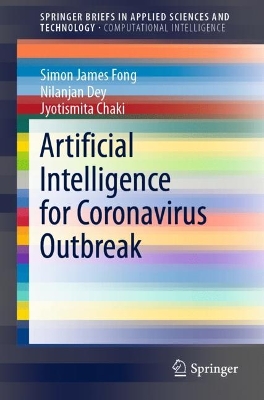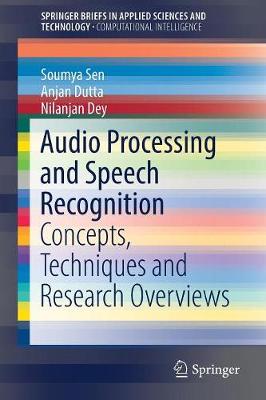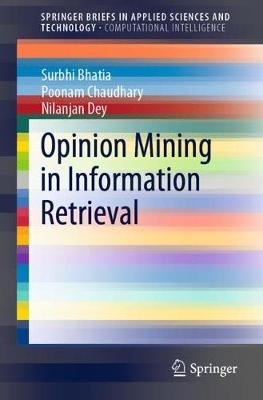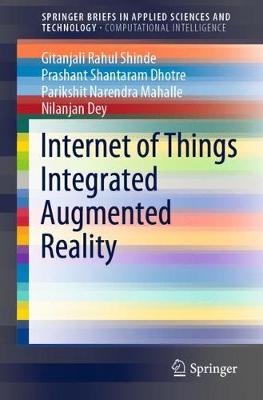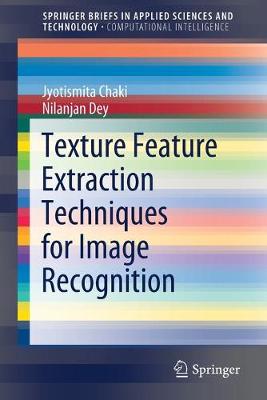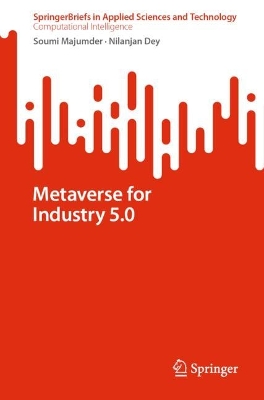SpringerBriefs in Applied Sciences and Technology
7 total works
Artificial Intelligence for Coronavirus Outbreak
by Simon James Fong, Nilanjan Dey, and Jyotismita Chaki
The book discusses how AI can help fight this deadly virus, from early warnings, prompt emergency responses, and critical decision-making to surveillance drones. Serving as a technical reference resource, data analytic tutorial and a chronicle of the application of AI in epidemics, this book will appeal to academics, students, data scientists, medical practitioners, and anybody who is concerned about this global epidemic.
Audio Processing and Speech Recognition
by Soumya Sen, Anjan Dutta, and Nilanjan Dey
Opinion Mining in Information Retrieval
by Surbhi Bhatia, Poonam Chaudhary, and Nilanjan Dey
This book discusses in detail the latest trends in sentiment analysis,focusing on “how online reviews and feedback reflect the opinions of users and have led to a major shift in the decision-making process at organizations.” Social networking has become essential in today’s society. In the past, people’s decisions to buy certain products (and companies’ efforts to sell them) were largely based on advertisements, surveys, focus groups, consultants, and the opinions of friends and relatives. But now this is no longer limited to one’s circle of friends, family or small surveys;it has spread globally to online social media in the form of blogs, posts, tweets, social networking sites, review sites and so on.
Though not always easy, the transition from surveys to social media is certainly lucrative. Business analytical reports have shown that many organizations have improved their sales, marketing and strategy, setting up new policies and making decisions based on opinion mining techniques.
Internet of Things Integrated Augmented Reality
by Gitanjali Rahul Shinde, Prashant Shantaram Dhotre, Parikshit Narendra Mahalle, and Nilanjan Dey
This book discusses the use of converged technology, a rapidly growing area that enhancements smart devices, communication, Internet of things (IoT), and augmented reality (AR). The book also explores the need for convergence of IoT and AR for various purposes, like personalized services, context awareness, and bridging the gap between the physical and digital world. Furthermore, it examines the implementation of IoT and AR in use cases to define pathways that allow application developers to design modern solutions to satisfy requirements like scalability, abstraction and security. Featuring an introduction, and covering sensing techniques, and effective architecture in AR-based IoT real-time use cases, the book also addresses the issues and challenges in designing standard architecture and middleware to support diverse applications. Given its scope, it is a valuable resource for teachers and students in engineering, as well as researchers, developers, and users working in multi-disciplinary areas.
Texture Feature Extraction Techniques for Image Recognition
by Jyotismita Chaki and Nilanjan Dey
The book describes various texture feature extraction approaches and texture analysis applications. It introduces and discusses the importance of texture features, and describes various types of texture features like statistical, structural, signal-processed and model-based. It also covers applications related to texture features, such as facial imaging. It is a valuable resource for machine vision researchers and practitioners in different application areas.
Image Color Feature Extraction Techniques
by Jyotismita Chaki and Nilanjan Dey
This book introduces a range of image color feature extraction techniques. Readers are encouraged to try implementing the techniques discussed here on their own, all of which are presented in a very simple and step-by-step manner. In addition, the book can be used as an introduction to image color feature techniques for those who are new to the research field and software. The techniques are very easy to understand as most of them are described with pictorial examples. Not only the techniques themselves, but also their applications are covered. Accordingly, the book offers a valuable guide to these tools, which are a vital component of content-based image retrieval (CBIR).
This book provides a detailed picture of the metaverse for industry 5.0. In the context of Industry 5.0, the concept of the metaverse aligns with the vision of Web 4.0, representing a digital ecosystem where individuals and organizations collaborate in a human-centric approach to create personalized value.This virtual universe connects multiple interconnected worlds, enabling real-time interactions between users and computer-generated environments. By integrating technologies such as artificial intelligence (AI), virtual reality (VR), augmented reality (AR), mixed reality(MR) and the Internet of Things (IoT), the metaverse within Industry 5.0 aims to foster innovation and enhance productivity, efficiency, and overall well-being through tailored and value-driven solutions. This book explores the concept of the metaverse in the context of Industry 5.0, highlighting its definition, evolution, advantages, and disadvantages. It also discusses pillars of technological advancement, challenges, and opportunities, ethical issues including its integration into various sectors, i.e., healthcare, construction, manufacturing and others. The entry concludes with a proposal for a conceptual framework for integrating the human-centric metaverse.
